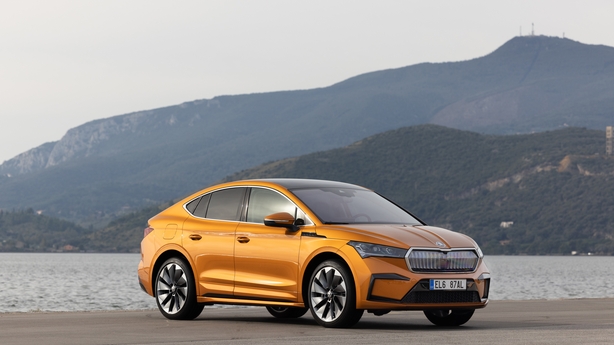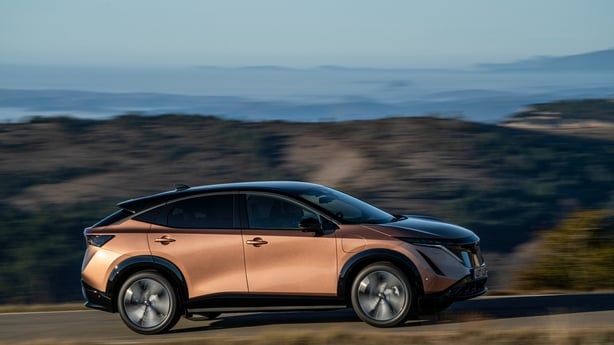We're still waiting for the arrival of an extensive choice of budget electric cars with good range, but it would appear we're still about two years away from that reality. In the meantime, there are plenty of expensive ones to choose from. We've driven two from Nissan and Skoda.
EVs are not cheap. With the exception of the Chinese MG brand, the cheapest models with reasonable battery capacity from mainstream car manufacturers such as Renault, Fiat, Peugeot and Nissan are all well over €35,000. The MG 4, on the other hand, comes in at just under €31,000.
However, allowing for the process of transition car companies are going through, the good news is that EVs will become cheaper and the tipping point when they will have prices comparable to petrol or diesel models isn’t that far away. Following next year’s launch of the Dacia Spring (expected to be Europe’s cheapest electric car), EVs that cost about €25,000 in Europe should become commonplace. Just don’t expect long-range cars with big batteries and budget prices though.
In the meantime, car companies are investing in electric cars that are effectively custom-made because more affluent buyers are adapting to them in greater numbers than the rest of us. And they are willing to pay more than the rest of us too.
Michelle Krebs, from Cox Automotive analysts, recently told The Hill political website in Washington that for just about every new automotive technology, "it always starts on more expensive cars and then works its way down as volume increases and they figure out ways to make it more affordable."

Skoda’s new electric Enyaq coupe, for example, sees the company leaving behind both its budget pricing and its budget image. The result is a price tag of almost €55,000 for the entry-level version. And Nissan’s entry version of the Ariya comes in at about €1,400 less.
Both are impressive in their own right, have good ranges of in or around 330 km (depending on conditions such as outside temperature and motorway driving) and have impressive interiors.
They are also both heavy, as cars laden with batteries tend to be. This is something that worries people like Hannah Daly, Professor in Sustainable Energy and Energy Systems Modelling at UCC, who told an Oireachtas Committee this week that cars are "getting bigger and heavier and this is offsetting efficiency gains from technology improvements".
The average weight of a new passenger car sold in Ireland "increased by 25% in the past two decades. Cars are now 300kg heavier than they were in 2001".
'This means that the carbon footprint of new cars - including EVs - is on average 10% higher than it would be if they were the same size as cars were two decades ago.
"So, there's a compelling argument to include weight and vehicle footprint in the calculation of the vehicle registration tax for both fossil fuels and electric cars,’ Prof Daly said.

The Nissan is heavier at 2,121 kg and the Skoda weighs in at 2,075 kg’s.
The Nissan wins out when it comes to styling because of its very sharp lines and flanks and the fact that its interior is finished in a premium way that we don’t normally associate with Nissan. It’s also a very tall SUV.
The Skoda isn’t exactly a slouch when it comes to styling - it’s a bit reminiscent of BMW’s GT styling - but its sloping roofline lends it a less edgy and more conservative look than the Nissan.
Where the Skoda comes into its own is with the capacity of its boot. At 570 litres, it is almost cavernous compared to Nissan’s 466 litres - a difference of over 20 per cent and one which, for many people, will be a critical difference.
The Skoda is also a better drive than the Nissan, with more steering engagement and precise responses. The latter can also feel a little sluggish, mainly due to the weight being carried compared, but the Skoda suffers a bit here too.
The cabin of both cars is spacious and bright. The Ariya I drove had an Alcantara suede finish over the dashboard and on the doors, had comfortable seats and its 12.3-inch twin screens for infotainment and functions were clear and crisp.

I preferred the central inch screen of the Skoda, which has excellent graphics and is straightforward, functional and intuitive. However, the smaller digital information display in front of the steering wheel is tiny.

The Skoda's digital controls are not quite as functional as the Nissan’s though. With the absence of an array of buttons, there is much to do on the screen but Nissan has been clever to provide a click response to let you know when you have engaged a function. It’s good to have this in the absence of normal buttons and knobs. The Skoda has some more buttons, however, which I prefer.
Overall, the Ariya is Nissan’s best EV yet. The styling is a big advantage and the interior certainly surprised me. However, Skoda isn’t far behind in the interior department. Both cars benefit from the absence of a transmission tunnel to achieve a flat floor roominess. Nissan also has a very clever centre console that can move back and forth
With comparable ranges from the entry-level versions of about 330 km from Nissan’s 63 kW battery and Skoda’s 62 kW unit, there isn’t a lot to separate these two cars and the prices of both are reasonably close. For approximately €5,000 more you can have a bigger 87 kWh battery with the Ariya and an 82 kWh unit with the Skoda and get better range. It is, however, quite a price jump and one wonders if the greater range really is worth the price.
My drive in both cars was uneventful in terms of range, as long as I planned my journey around the availability of Ionity charging stations, which I would strongly recommend as a backup to the ESB’s limited fast-charging network.
Both cars have a full five-star EuroNCAP crash test rating and both have excellent active and passive safety equipment. Nissan also uses its unique e-pedal technology which allows you to use a single pedal for both braking and acceleration to maximise regenerative braking.
So let’s give it to the Nissan for the styling and the Skoda for its practicality. There’s little else in it, except the price. And the price of both is prohibitively high for most people.

